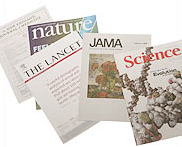Community Embraces New Word Game at Mid-Year Play Day This past Sunday, families at Takoma Park’s Seventh Annual Mid-Year Play Day had the opportunity to experience OtherWordly for the first time. Our educational language game drew curious children and parents to our table throughout the afternoon. Words in Space Several children gathered around our iPads […]
Read more The system of getting knowledge about science to the public is broken. One major crack in the system is a disconnect between science museums and new science research.
The system of getting knowledge about science to the public is broken. One major crack in the system is a disconnect between science museums and new science research.
Science museums matter
Aside from the news media, which now has less science coverage as the journalism business contracts, museums play a vital role in how the public learns about science outside of school. New data show that science museums play an important part in this informal learning.
Despite enthusiastic scientists who are using social media, leading citizen science, and supporting other kinds of outreach, the vast majority of scientific information is ensconced in journals and conferences.
To connect this knowledge to the public, it’s common practice for closed-access journals to give journalists free (advance) access to new articles. But the same courtesy is not provided to science museums that would also benefit from new articles, as well as a back library of older articles. And science museums rarely budget for journal subscriptions.
This is a shame, as science museums can strongly influence the public’s knowledge and attitudes about science and technology, and to a surprising degree can cut across racial, ethnic, educational and economic barriers. (See OSU press release.)
 Science museums lack journal access
Science museums lack journal access
Scholarly knowledge is hidden in closed-access journals. Vital and current knowledge is behind paywalls, out of reach of educators. This reduces the quality of new exhibitions and harms the chances of new funding.
Charlie Carlson, senior scientist at the Exploratorium, says this lack of access is unfortunate because “scientific journal access would be extremely useful in covering, describing and presenting the latest scientific developments and discourse. This seems a bit like a no brainer.”
Martin Weiss, a science interpretation consultant for the New York Hall of Science, says he needs journal access to research and prepare content for exhibitions. Since he does not have access himself, “when I really need something I prevail upon colleagues who have university library access for PDFs.”
Jeff Courtman is director of exhibit development at Museumscapes, an exhibit design and fabrication firm, and has worked in the museum field for over 25 years, mostly in science centers. During that time, he lacked ready access to science journals. But ironically, now that he’s switching fields and is a student again (working on an Masters degree in mental health counseling) he has access to a broad spectrum of journals via his university.
The converse is true for science organizations who don’t have access to education journals. Sue Ann Heatherly is an education officer at the National Radio Astronomy Observatory (NRAO). She has access to science, astronomy and engineering journals, but not to fee-based science education journals. Heatherly says she “can ask my organization to purchase articles for me, but that’s not the same as the ‘random walk’ one needs to do in the early stages of finding relevant studies.”
Heatherly says that as an informal education practitioner, she should be reading more of the research on learning and “not flying by the seat of our pants when developing educational programming. I’m working now on a rewrite of the failed proposal and I have learned so much from digging into the research as I always do.” She doesn’t have an alternative, “I’m trying to gain privileges at a state university — so far no luck. Right now, I read abstracts, and purchase a few articles.”
 Open access & blogs
Open access & blogs
The good news is that museum and educational staff increasingly rely on open access journals and blogs for access to new information about scientific advancements & research, as well as social science research about learning. (See my recent articles about open access journals; and rise of blogging.)
In lieu of institutional journal subscriptions, Carlson personally pays for his own subscription to Science, uses someone else’s subscription to Nature, and reads the open access PLoS journal. Carlson is an avid reader of blogs, and enjoys the provocative themes of New Scientist and Wired. Still, he says that while he loves the blogs and magazine, “I very much like to reference the original materials and see the original papers.” He says, “science bloggers have picked up the slack and they bring freshness and new perspectives, and frequently their perspectives provide valuable observations and insights.”
Courtman was originally trained as an artist. But blogs and free online news have helped him look for new connections and discoveries. He says, “I appreciate sites like physorg.com because it gives me the top-level view. I don’t have to be a science expert to understand and if something piques my interest — perhaps I begin wondering about a connection — I can dig deeper.”
 Relying on science advisors and stale knowledge
Relying on science advisors and stale knowledge
Weiss has a strong science background, but says, “I don’t think the majority of science centers have staff to be able to utilize [science journals]. For them the science advisors are sufficient.” Creating new exhibitions is a complex business, involving many staff, and the science is only a small piece. Weiss says that not all of the staff who are preparing programs or exhibitions “need or really want to have access… we use expert advisors to vet information for us.”
Only a small subset of staff at science museums actually want to read science literature, Carlson says. “It seems to me that getting the focus of informal science education back on the science and process of discovery would be a first step. When I started the focus was science and investigation, now it’s education and science is the vehicle, and it should be the other way.”
There may be too much focus on methods instead of substance. Carlson says that informal science education professionals tend to focus on “educational technique and methodologies rather than content, principles, and critical thinking. Basically, science is not deemed critical to the mission, which is unfortunate, since it’s actually central to the mission and essential to the development of new content.”
Carlson says that excessive focus on methodology “inherently diminishes the role of scientific discovery. Most information discussed in the informal science education field comes from secondary and tertiary sources where it has been preprocessed and sometimes distorted. And then it’s impossible to get to the sources. Carlson says, “I think that there can be a stagnation without access to journals. The New York Times [science section] will take you only so far.”
Collective bargaining power?
 If museums can’t afford the rates from commercial journal providers, can they band together to get a better deal? The membership society of science centers, Association of Science-Technology Centers (ASTC), has not used its bargaining power of 600 member museums and centers in 45 countries to negotiate journal access to get a good deal for this overlooked corner of the market.
If museums can’t afford the rates from commercial journal providers, can they band together to get a better deal? The membership society of science centers, Association of Science-Technology Centers (ASTC), has not used its bargaining power of 600 member museums and centers in 45 countries to negotiate journal access to get a good deal for this overlooked corner of the market.
 The merchandisers fills in
The merchandisers fills in
Where there’s no money for knowledge, the merchandizers have a field day. One alarming example is the content in the $2m Harry Potter exhibition which recently circulated several top museums, and had it’s content provided by Warner Bros. Consumer Products division, which handles licensing and merchandising deals, like action figures for fast food kid’s meals. See my article on blockbuster traveling exhibits.
Without science as a mandate, that Harry Potter exhibit missed a ton of opportunities to bring in the science of potions, flight, or invisibility. By contrast, when the U.S. National Library of Medicine created a small format (a set of panels) traveling exhibition, “Harry Potter’s World: Renaissance Science, Magic, and Medicine,” which travels to libraries for less than $500 cost, they included much more science.
Update: 27-Apr: Minor typos fixed.
5 comments on Science museums are disconnected from new science research
Comments are closed.


26 Apr 2011, 8:53 am
Excellent research and report out on the availability of crucial literature for science museums. As an independent researcher, I obtain access to specific databases through the Princeton Research Forum, a group of independent scholars (and arm of National Coalition of Independent Scholars, NCIS) which purchases access to Princeton University libraries. However, this level of access does not include checking out books, which is a long standing problem for scholars and researchers working independently. As Jeff Courtman points out, his new status as a university student changed all that. As an adjunct professor at a local community college, I would recommend looking into whether your community college may provide access to the pertinent databases which are available to part-time students who sign up for even one class. Despite budget shortfalls, the college still offers interlibrary loan services–at least for now.
27 Apr 2011, 3:13 am
Three years ago, the e.Knownet project set off motivated exactly by this lack of information bridges between science centres and the research lab. The project was co-funded by the Lifelong Learning Programme of the European Commission and coordinated by the Eugenides Foundation, a Greek science centre. The project focused its efforts to help a fast and efficient sharing of new scientific knowledge produced in the research lab with various learning communities. Original information and learning material in the field of Photochemistry was produced by 65 researchers from various European labs in collaboration with science communicators and science educators. The main outcomes are showcased in a web-based platform titled ScienceTweets (http://www.sciencetweets.eu), focusing thematically on Photochemistry. researchers all over Europe.
This direct cooperation between researchers and transformers of specialised knowledge allowed Photochemistry researchers to decide upon what is actually ‘newsworthy’ in their study field by use of scientific standards, and also to decide upon the way that this knowledge should be shared with wider parts of society.
The project was concluded last December (2010). We really hope that it will find immitators!
27 Apr 2011, 11:49 am
I think Carlson is being a bit unfair to a lot of science center staff who, like school teachers, work very hard for poor compensation. I doubt it's quite as severe as he says, that most staff don't want to read the literature, but rather, that they just don't have time as part of their job, or really, are encouraged to. I'd be curious to hear actual data on this, rather than what appears to be just his speculation. From my experience as a manager in a science center, I rarely had time myself to keep up to date with literature, and my staff, who were the ones usually talking to visitors, had none. There was no money or effort put toward this.
Your post could also use some good copyediting; the mistakes are pretty distracting: "converge" instead of "coverage," "peaked" instead of "piqued," among others.
Have museums considered asking their local university libraries to allow them access? Maybe this is also fodder for an IMLS grant …
Thanks for this very important post.
27 Apr 2011, 11:53 am
Typos fixed. Thx.
27 Apr 2011, 12:42 pm
Greetings from New Mexico where we have a partnership between the NM Museum of Natural History & Science, the Santa Fe Institute (SFI, an international center for complexity science), and the Center for Cultural Technology, which is in itself a partnership between the Media Arts Program at New Mexico Highlands University and the NM Department of Cultural Affairs. SFI used education and outreach funding from a large NSF grant to underwrite the design and production of an exhibit for the museum, and their researchers provided content. The exhibit was primarily produced by students enrolled in PICT (the Program in Interactive Cultural Technology). The goals were threefold: to introduce complexity science into museum interpretation; to use social media to connect the exhibit to audiences beyond museum walls; and to use technology to expand and update the exhibit as research unfolds. The exhibit is scheduled to open in Albuquerque on June 30th. For more information contact me at mimi.roberts@state.nm.us. .